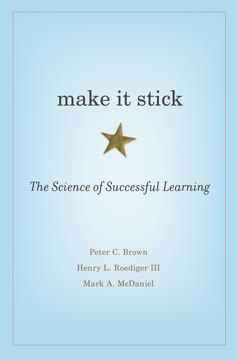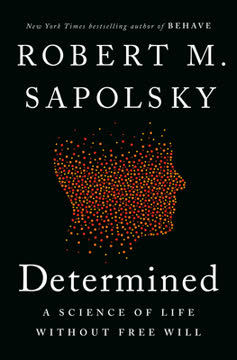Key Takeaways
1. Economic forces shape sexual behavior and relationships
"I argue that almost every option, every decision, and every outcome in matters of sex and love is better understood by thinking within an economic framework."
Supply and demand in relationships. Economic principles apply to our romantic lives, influencing everything from casual hookups to long-term partnerships. The "price" of sex and love is determined by factors such as:
- Availability of potential partners
- Individual "market value" based on attributes like attractiveness, income, and education
- Costs and benefits of different relationship arrangements
Changing norms over time. Economic developments have transformed sexual behavior:
- Contraception reduced the "cost" of premarital sex
- Women's increased economic independence altered marriage dynamics
- Technology lowered search costs for finding partners
These shifts explain trends like delayed marriage, increased cohabitation, and changing attitudes towards casual sex.
2. Online dating transforms mate selection and market dynamics
"Online searches encourage us to find qualities that are easy to measure: age, height, education, race, income, etc. The quality of a relationship, however, is more about experiential qualities than it is about empirical qualities, and those are much harder to quantify and to search for online."
A thicker market. Online dating has dramatically expanded the pool of potential partners, creating a "thicker" market with more options. This leads to:
- More efficient matching based on preferences
- Potentially higher-quality relationships due to better selection
Unintended consequences. However, the nature of online platforms can also:
- Encourage excessive filtering based on superficial criteria
- Create unrealistic expectations due to seemingly endless options
- Lead to "choice overload" and decision paralysis
Data-driven insights. Online dating has provided researchers with vast amounts of data on mate preferences, revealing patterns in how people select partners based on factors like race, education, and physical appearance.
3. Education and income inequality influence marriage patterns
"As the incomes of wealthy households increase, everyone spends more in an attempt to keep up with their consumption."
Assortative mating. People increasingly marry others with similar education and income levels, contributing to overall inequality:
- College-educated individuals are more likely to marry each other
- This concentrates high incomes within households
Delayed marriage. Rising inequality and economic pressures affect marriage timing:
- Young adults delay marriage to establish careers and financial stability
- This trend is more pronounced among those with higher education
Marriage gap. A growing "marriage gap" has emerged between socioeconomic classes:
- Marriage rates are higher among the college-educated and affluent
- Lower-income individuals are less likely to marry, partly due to economic instability
These patterns can perpetuate and exacerbate existing inequalities across generations.
4. Bargaining power in relationships depends on economic factors
"Having more education and a higher wage may make it easier for married women to leave an unhappy marriage, but does that imply that higher rates of education for women are responsible for high divorce rates?"
Shifting dynamics. As women's economic opportunities have increased, relationship bargaining power has evolved:
- Women's ability to support themselves financially provides leverage
- This can lead to more egalitarian decision-making in relationships
Factors affecting bargaining power:
- Income and earning potential
- Education level
- Age (especially in age-gap relationships)
- Attractiveness and perceived "market value"
Implications for relationship stability. Changes in bargaining power can affect:
- Division of household labor
- Financial decision-making
- Overall relationship satisfaction and stability
While increased female bargaining power hasn't necessarily led to higher divorce rates, it has changed the nature of marital negotiations and expectations.
5. Infidelity is an economic decision with costs and benefits
"Men and women cheat in marriage because they believe at the outset that the benefit of doing so outweighs the expected costs."
Cost-benefit analysis. The decision to cheat involves weighing:
- Potential benefits: sexual satisfaction, emotional fulfillment, ego boost
- Potential costs: risk of discovery, relationship damage, financial penalties
Factors influencing infidelity:
- Income and financial independence
- Occupation and opportunities for extramarital encounters
- Age and perceived attractiveness
- Relationship satisfaction
Gender differences. Contrary to popular belief:
- Higher-income women are less likely to cheat than lower-income women
- Men's likelihood of cheating isn't strongly correlated with income
- Power and status increase infidelity likelihood for both genders
Understanding infidelity through an economic lens doesn't justify the behavior but provides insights into its occurrence and potential prevention strategies.
6. Teenage sexuality is affected by economic opportunities
"There is a relationship between the economic environment and what societies believe to be socially acceptable adolescent sexual behavior."
Future prospects influence behavior. Teenagers' sexual decisions are shaped by their perceived economic opportunities:
- Those with higher education expectations tend to delay sexual activity
- Limited economic prospects can lead to earlier sexual debut and teen pregnancy
Education and contraception use. Access to affordable education affects sexual behavior:
- Lower college tuition is associated with fewer sexual partners among teens
- Expectation of attending college increases contraception use
Inequality and "culture of despair". High income inequality can create a "culture of despair" among disadvantaged youth:
- Reduced perceived costs of early parenthood if upward mobility seems unlikely
- This partly explains higher teen pregnancy rates in areas with high inequality
Addressing teenage sexuality requires considering not just health education, but also broader economic factors and opportunities.
7. Later-life dating markets are growing due to demographic shifts
"Markets, as I have already said, can be described as being thick or thin. When markets are thin, there are few buyers and sellers—it is harder to arrive at price at which both buyers and sellers are willing to engage in trade—and few transactions take place. When the market is thick, however, there are many buyers and sellers, meaning that equilibrium is easier to achieve—buyers and sellers can settle on a market price at which they both want to trade—and more transactions take place."
A thicker market. The late-in-life dating market has expanded due to several factors:
- Increased life expectancy
- Higher divorce rates
- Changing social norms around senior sexuality
Technology adoption. Older adults are increasingly using online dating platforms:
- This expands their pool of potential partners
- It reduces search costs, which were traditionally higher for older daters
Changing preferences. Traditional assumptions about older daters are being challenged:
- Many older women prefer casual relationships to long-term commitments
- Age gaps in relationships are becoming more acceptable, including "cougar" relationships
Health considerations. STD rates are rising among older adults:
- Less concern about pregnancy can lead to riskier behavior
- There's a need for targeted sexual health education for this demographic
The growth of this market challenges stereotypes about aging and sexuality, while also presenting new opportunities and challenges for older adults seeking companionship.
Last updated:
FAQ
What's Dollars and Sex: How Economics Influences Sex and Love about?
- Economic Lens on Relationships: The book explores how economic principles shape our understanding of sex, love, and marriage, examining the interplay between individual choices and broader economic factors.
- Three Acts Structure: It is divided into three acts representing different life stages—youth, marriage, and later life—highlighting how economic factors shape sexual behavior and relationship dynamics at each stage.
- Real-Life Examples and Data: Marina Adshade uses real-life stories, statistical data, and economic theories to illustrate how individuals navigate the markets for sex and love.
Why should I read Dollars and Sex?
- Unique Perspective: The book offers a fresh perspective by applying economic theories to personal relationships, making it a compelling read for those interested in both economics and social sciences.
- Practical Insights: Readers can gain insights into their own dating and relationship choices, understanding how economic forces shape their decisions and the dynamics of their relationships.
- Engaging Stories and Data: Adshade combines empirical data with engaging narratives, making complex economic concepts accessible and relatable.
What are the key takeaways of Dollars and Sex?
- Economic Forces Shape Relationships: Economic factors, such as education and income, significantly influence mating behavior and relationship choices.
- Market Dynamics in Dating: The "supply and demand" of potential partners affects dating behaviors, particularly in settings where gender ratios create buyer's or seller's markets.
- Importance of Education and Income: Educational attainment and income disparities impact marriage prospects and relationship dynamics, particularly for women.
What are the best quotes from Dollars and Sex and what do they mean?
- Economic Forces Quote: "Without taking into consideration economic forces, our understanding of the world around us is incomplete." This underscores the importance of integrating economic principles into our understanding of personal relationships.
- Humorous Insight: "The answer is yes and no—when it comes to penis size and economic well-being, all the action is in the tails of the distribution." This illustrates the complexity of human behavior and its correlation with economic trends.
- Marriage Ambivalence: "Marriage is a fine institution—but I’m not ready for an institution yet." This reflects the ambivalence many feel towards marriage, suggesting its societal value versus individual readiness.
How does Dollars and Sex explain the impact of online dating?
- Thick vs. Thin Markets: Online dating creates "thick markets" with many participants, leading to better matches, but filtering options can lead to "thin markets" that limit potential partners.
- Self-Perception and Attractiveness: Individuals often overestimate their attractiveness and market value, leading to unrealistic expectations in online dating scenarios.
- Data-Driven Insights: Adshade uses data from online dating platforms to analyze preferences and behaviors, providing a unique lens on modern dating dynamics.
What economic concepts are central to Dollars and Sex?
- Supply and Demand: The book applies these principles to the dating market, explaining how the availability of potential partners influences dating behaviors and relationship outcomes.
- Comparative Advantage: Individuals can benefit from specializing in different roles within a relationship, similar to how economies benefit from trade based on comparative advantages.
- Opportunity Cost: Explored in the context of relationship choices, emphasizing the trade-offs individuals make when deciding between potential partners.
How does Dollars and Sex address the concept of promiscuity?
- Economic Incentives: Economic conditions, such as income and education, influence individuals' decisions to engage in promiscuous behavior, particularly among young adults.
- Cultural Shifts: Changing societal norms and economic factors have led to increased acceptance of premarital sex and casual relationships.
- Consequences of Promiscuity: The potential long-term effects on individuals' happiness and relationship stability are examined, suggesting more partners do not necessarily equate to greater satisfaction.
What role does marriage play in Dollars and Sex?
- Marriage as an Institution: Defined as a social institution shaped by economic factors, emphasizing its role in the efficient production of household goods and services.
- Bargaining Power: Marriage can enhance bargaining power within relationships, particularly when partners have different economic resources and skills.
- Changing Dynamics: Modern marriage dynamics are evolving, particularly with shifts in gender roles and economic independence for women.
How does Dollars and Sex relate to societal changes in marriage?
- Declining Marriage Rates: The decline in marriage rates, particularly among educated women, is addressed, with economic factors contributing to this trend.
- Same-Sex Marriage: The evolution of societal attitudes toward same-sex marriage is linked to broader economic and social changes promoting individual rights and freedoms.
- Impact of Education: The relationship between education levels and marriage prospects is explored, highlighting how educated individuals are more selective in their partner choices.
What insights does Dollars and Sex provide about gender dynamics in relationships?
- Gender Imbalance: Examines how gender ratios in dating markets affect relationship dynamics, particularly in college settings where women often outnumber men.
- Economic Independence: Women's increasing economic independence is reshaping traditional gender roles within relationships and marriage.
- Expectations and Preferences: Societal expectations influence men's and women's preferences in partners, particularly regarding education and income.
How does Dollars and Sex address the impact of technology on relationships?
- Online Dating: The rise of online dating has changed the landscape of relationships, making it easier for individuals to find partners and increasing the diversity of potential matches.
- Search Costs: Technology has reduced the search costs associated with finding a partner, allowing individuals to be more selective and potentially leading to higher-quality relationships.
- STD Testing Technology: Advancements in STD testing technology could influence sexual behavior, potentially increasing risky practices if individuals feel more secure about their health status.
What does Dollars and Sex say about the future of marriage?
- Changing Institutions: Marriage as an institution will continue to evolve in response to economic and societal changes, including shifts in gender roles and the increasing acceptance of diverse relationship structures.
- Economic Independence: As women gain more economic independence, their views on marriage and relationships will continue to shift, potentially leading to new forms of partnerships and family structures.
- Technological Impact: The role of technology in shaping future relationships, including online dating and communication, may further influence how people approach love and marriage.
Review Summary
Dollars and Sex by Marina Adshade explores the economics of love, sex, and relationships. Readers found it insightful, entertaining, and thought-provoking, praising its unique perspective on human behavior. The book uses economic principles to explain dating, marriage, and sexual choices. While some appreciated its humor and accessibility, others found it overly statistical or lacking in romantic sentiment. Critics noted occasional editing issues and a North American bias. Overall, most readers found it an engaging read that challenges conventional views on love and relationships.
Similar Books









Download PDF
Download EPUB
.epub digital book format is ideal for reading ebooks on phones, tablets, and e-readers.




